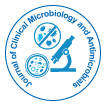

Fahima Aktera and Md Shamimuzzaman*
Escherichia coli is a common enteric pathogen responsible for dirrhoea and have a high predominance rate in tropical area. This study aims to identify and antimicrobial susceptibility testing of diarrheagenic E. coli in Dhaka city. Two hundred and eighteen Escherichia coli isolates were identified using cultural characteristics, automated biochemical test and Polymerase Chain Reaction (PCR). E. coli species were identified through VITEK 2 ID-GN card and 16S rRNA, stx1 and stx2 gene were detected by means of PCR. Among 223 isolates, 218 (97.75%) were correctly identified to the species level with the VITEK 2 system. In our study 45.7% (102 out of 218) isolates were identified within the excellent level and 32.7% (73 out of 218) isolates were in the very good level. Good and acceptable level identification was respectively 10.8% (24 out of 218) and 8.5% (19 out of 218). More importantly, 2.2% (5 out of 218) isolates were not able to identify. In this experiment, from 218 isolates of E. coli, stx1 and stx2 were detected in 86 (39.4%) and 122 (56.0%) respectively. In total 218 organisms were tested for antibiogram with AST-GN72 card after identification. We found that 81.6% of isolated strains (178 out of 218) exerted at least resistance to one antibiotic. Meanwhile, of 218 tested organisms, there were 15 species that showed VMEs. The final ME and mE shown organisms were 26 and 72. Overall 98.87% EA and 96.0% CA was calculated for microbes versus antimicrobial agent. The most common resistance pattern of multi-resistant serovars was to ampicillin, chloramphenicol, sulphonamide and trimethoprim. Ongoing research is an evidence for researcher to evaluate the etiology of emerging multi-drug resistance shiga-toxin producing E. coli.
Published Date: 2025-06-10; Received Date: 2024-01-14